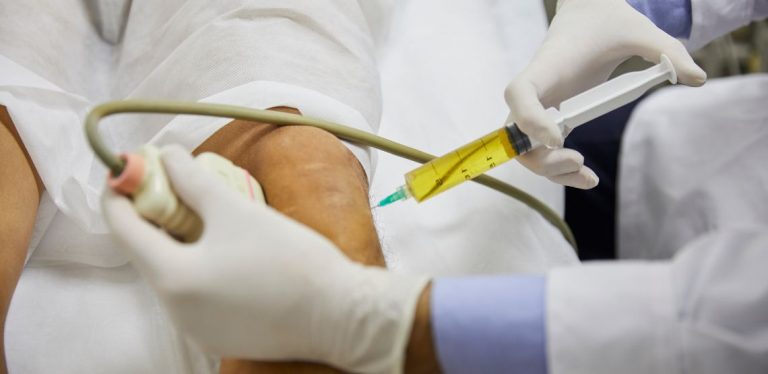Regenerative Medicine Has Come a Long Way
In recent years, regenerative medicine has come a long way. While the human body can miraculously heal itself, regenerative medicine, like stem cell therapy, can help treat and restore function lost due to age, disease, or trauma.
Stem cell therapy is one of the most popular forms of regenerative medicine. So, let’s look into stem cell therapies a little deeper. What types of injuries can be healed via stem cell therapy? How does stem cell therapy work?
What is Stem Cell Therapy?
Stem cells are human cells that can develop into various different cells. When stem cells divide, they either become new stem cells or specialized cells that perform a specific function, such as blood cells, bone cells, or heart muscle cells. Blood stem cells can also develop into any cell in the bloodstream.
The reason this is such a big deal is that no other cell can do this. Additionally, stem cells can help treat various diseases and conditions due to their versatility and ability to replace old or damaged cells with new ones.
Thus, stem cell treatments can help treat age-related changes, repair damage, and reduce inflammation. It opens the doors to incredible medical interventions and life-saving protocols.
Yet, at the same time, stem cells don’t come without controversy. Currently, it’s considered ethically okay to use adult stem cells. However, the use of embryonic stem cells has been widely debated. Researchers are curious about embryonic stem cells due to their high versatility. Embryonic stem cells can become a variety of other cells, whereas adult stem cells are much more limited.
What Types of Injuries Can Stem Cell Treatments Help?
Stem cell therapy can help a wide range of people and injuries, including:
- Spinal cord injuries.
- Parkinson’s disease.
- Type 1 diabetes.
- ALS (amyotrophic lateral sclerosis).
- Alzheimer’s disease.
- Stroke patients.
- Heart disease.
- Cancer.
- Osteoarthritis.
- Burns.
Stem cells are further used for new tissue for transplants. Stem cell transplants are also performed in some cases, like leukemia or any condition where the bone marrow has been damaged and cannot produce new red blood cells. In fact, stem cells have been used in transplants for bone marrow and blood conditions for many years with great success.
Related Search Topics (Ads)
Stem Cell Therapy Options
For the most part, stem cell therapy is largely experimental. Much cell research is still in the early stages, such as clinical trials. However, stem cells have also been used to treat some diseases with some success. Again, more research and trials are needed.
At the same time, there are some available stem cell treatments, like Cellaxys. Cellaxys uses a person’s own stem cells or PRP therapy to accelerate healing and achieve desired effects. This medical team uses stem cells to treat bones, joints, ligaments, tendons, and nerves, aging, decrease hair loss, and even improve sexual wellness.
Stem Cell Power Now is another clinic that offers some stem cell therapies. They help treat a variety of conditions as well, including disease, disorders, neuropathy, and more. Primarily, Stem Cell Power Now focuses on treating musculoskeletal issues as well as offers some anti-aging treatments.
What Else Should You Know About Stem Cell Therapy?
Before diving headfirst into stem cell treatment, you should know the following:
- Each person is unique, and not every individual is a good candidate for stem cell therapy.
- Stem cell therapy is not yet regulated by the FDA.
- Stem cell therapy currently only involves the use of a person’s own stem cells.
- You must do your research on any stem cell clinic due to the lack of regulation in this area.
- Just because stem cell therapy uses cells from your own body, it doesn’t mean it’s safe. (Again, ensure you do your due diligence and research before committing to any stem cell therapy!).
Stem cell therapy is taking the medical world by storm. In the regenerative medicine industry, this type of therapy shows great promise, especially when it comes to life-threatening or terminal diseases.
However, it is still quite new. Thus, ensure, if you decide to go this route, to thoroughly do your research. With more and more stem cell research coming out every day, it’s exciting and offers tons of hope to those that may need it the most.
In the future, researchers are hopeful that stem cells will help enhance our understanding of how diseases and conditions work, aid in generating new cells and provide a safe way to test new drugs or drug combinations.

